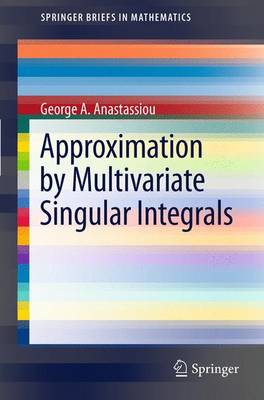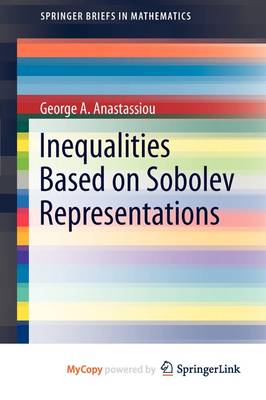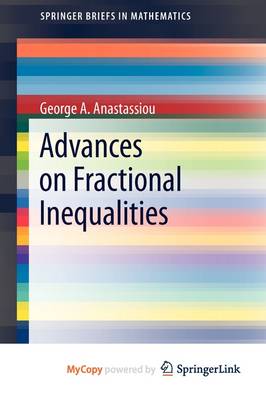SpringerBriefs in Mathematics
3 total works
Approximation by Multivariate Singular Integrals is the first monograph to illustrate the approximation of multivariate singular integrals to the identity-unit operator. The basic approximation properties of the general multivariate singular integral operators is presented quantitatively, particularly special cases such as the multivariate Picard, Gauss-Weierstrass, Poisson-Cauchy and trigonometric singular integral operators are examined thoroughly. This book studies the rate of convergence of these operators to the unit operator as well as the related simultaneous approximation. The last chapter, which includes many examples, presents a related Korovkin type approximation theorem for functions of two variables.
Relevant background information and motivation is included in this exposition, and as a result this book can be used as supplementary text for several advanced courses. The results presented apply to many areas of pure and applied mathematics, such a mathematical analysis, probability, statistics and partial differential equations. This book is appropriate for researchers and selected seminars at the graduate level.
Inequalities based on Sobolev Representations deals exclusively with very general tight integral inequalities of Chebyshev-Gruss, Ostrowski types and of integral means, all of which depend upon the Sobolev integral representations of functions. Applications illustrate inequalities that engage in ordinary and weak partial derivatives of the involved functions. This book also derives important estimates for the averaged Taylor polynomials and remainders of Sobolev integral representations. The results are examined in all directions and through both univariate and multivariate cases. This book is suitable for researchers, graduate students, and seminars in subareas of mathematical analysis, inequalities, partial differential equations and information theory.
Advances on Fractional Inequalities use primarily the Caputo fractional derivative, as the most important in applications, and presents the first fractional differentiation inequalities of Opial type which involves the balanced fractional derivatives. The book continues with right and mixed fractional differentiation Ostrowski inequalities in the univariate and multivariate cases. Next the right and left, as well as mixed, Landau fractional differentiation inequalities in the univariate and multivariate cases are illustrated. Throughout the book many applications are given.
Fractional differentiation inequalities are by themselves an important and great mathematical topic for research. Furthermore they have many applications, the most important ones are in establishing uniqueness of solution in fractional differential equations and systems and in fractional partial differential equations. Also they provide upper bounds to the solutions of the above equations.
Fractional Calculus has emerged as very useful over the last forty years due to its many applications in almost all applied sciences. This is currently seen in applications in acoustic wave propagation in inhomogeneous porous material, diffusive transport, fluid flow, dynamical processes in self-similar structures, dynamics of earthquakes, optics, geology, viscoelastic materials, bio-sciences, bioengineering, medicine, economics, probability and statistics, astrophysics, chemical engineering, physics, splines, tomography, fluid mechanics, electromagnetic waves, nonlinear control, signal processing, control of power electronic, converters, chaotic dynamics, polymer science, proteins, polymer physics, electrochemistry, statistical physics, rheology, thermodynamics, neural networks, etc. Almost all fields of research in science and engineering use fractional calculus in order to describe results.
This book is a part of Fractional Calculus, therefore it is useful for researchers and graduate students for research, seminars and advanced graduate courses, in pure and applied mathematics, engineering and all other applied sciences.


